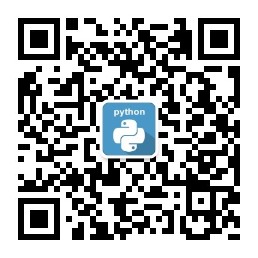无论哪种编程语言,时间肯定都是非常重要的部分,今天来看一下python如何来处理时间和python定时任务,注意咯:本篇所讲是python3版本的实现,在python2版本中的实现略有不同,有时间会再写一篇以便大家区分。
1.计算明天和昨天的日期
#! /usr/bin/env python #coding=utf-8 # 获取今天、昨天和明天的日期 # 引入datetime模块 import datetime #计算今天的时间 today = datetime.date.today() #计算昨天的时间 yesterday = today - datetime.timedelta(days = 1) #计算明天的时间 tomorrow = today + datetime.timedelta(days = 1) #打印这三个时间 print(yesterday, today, tomorrow)
2.计算上一个的时间
方法一:
#! /usr/bin/env python
#coding=utf-8
# 计算上一个的时间
#引入datetime,calendar两个模块
import datetime,calendar
last_friday = datetime.date.today()
oneday = datetime.timedelta(days = 1)
while last_friday.weekday() != calendar.FRIDAY:
last_friday -= oneday
print(last_friday.strftime('%A, %d-%b-%Y'))方法二:借助模运算寻找上一个星期五
#! /usr/bin/env python
#coding=utf-8
# 借助模运算,可以一次算出需要减去的天数,计算上一个星期五
#同样引入datetime,calendar两个模块
import datetime
import calendar
today = datetime.date.today()
target_day = calendar.FRIDAY
this_day = today.weekday()
delta_to_target = (this_day - target_day) % 7
last_friday = today - datetime.timedelta(days = delta_to_target)
print(last_friday.strftime("%d-%b-%Y"))3.计算歌曲的总播放时间
#! /usr/bin/env python
#coding=utf-8
# 获取一个列表中的所有歌曲的播放时间之和
import datetime
def total_timer(times):
td = datetime.timedelta(0)
duration = sum([datetime.timedelta(minutes = m, seconds = s) for m, s in times], td)
return duration
times1 = [(2, 36),
(3, 35),
(3, 45),
]
times2 = [(3, 0),
(5, 13),
(4, 12),
(1, 10),
]
assert total_timer(times1) == datetime.timedelta(0, 596)
assert total_timer(times2) == datetime.timedelta(0, 815)
print("Tests passed.\n"
"First test total: %s\n"
"Second test total: %s" % (total_timer(times1), total_timer(times2))) 4.反复执行某个命令
#! /usr/bin/env python
#coding=utf-8
# 以需要的时间间隔执行某个命令
import time, os
def re_exe(cmd, inc = 60):
while True:
os.system(cmd);
time.sleep(inc)
re_exe("echo %time%", 5) 5.定时任务
#! /usr/bin/env python
#coding=utf-8
#这里需要引入三个模块
import time, os, sched
# 第一个参数确定任务的时间,返回从某个特定的时间到现在经历的秒数
# 第二个参数以某种人为的方式衡量时间
schedule = sched.scheduler(time.time, time.sleep)
def perform_command(cmd, inc):
os.system(cmd)
def timming_exe(cmd, inc = 60):
# enter用来安排某事件的发生时间,从现在起第n秒开始启动
schedule.enter(inc, 0, perform_command, (cmd, inc))
# 持续运行,直到计划时间队列变成空为止
schedule.run()
print("show time after 10 seconds:")
timming_exe("echo %time%", 10) 6.利用sched实现周期调用
#! /usr/bin/env python
#coding=utf-8
import time, os, sched
# 第一个参数确定任务的时间,返回从某个特定的时间到现在经历的秒数
# 第二个参数以某种人为的方式衡量时间
schedule = sched.scheduler(time.time, time.sleep)
def perform_command(cmd, inc):
# 安排inc秒后再次运行自己,即周期运行
schedule.enter(inc, 0, perform_command, (cmd, inc))
os.system(cmd)
def timming_exe(cmd, inc = 60):
# enter用来安排某事件的发生时间,从现在起第n秒开始启动
schedule.enter(inc, 0, perform_command, (cmd, inc))
# 持续运行,直到计划时间队列变成空为止
schedule.run()
print("show time after 10 seconds:")
timming_exe("echo %time%", 10) 

